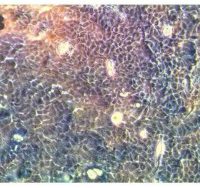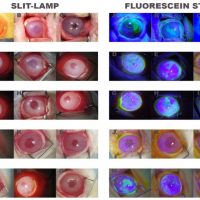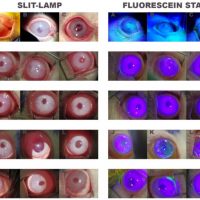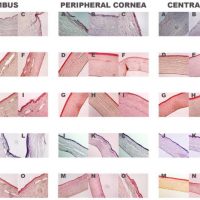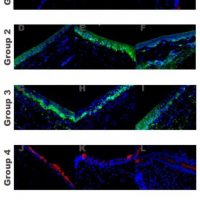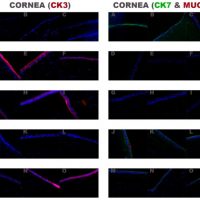- Author:
- Eduardo Anitua
- Ronald M Sánchez-Ávila
- Natalia Vázquez
- Manuel Chacón
- Mairobi Persinal-Medina
- Agustín Brea-Pastor
- Silvia Berisa-Prado
- Luis Fernández-Vega-Cueto
- lvaro Meana
- Jesús Merayo-Lloves
Fibrin-Plasma Rich in Growth Factors Membrane for the Treatment of a Rabbit Alkali-Burn Lesion
Abstract
The purpose of this work is to describe the use of Fibrin-Plasma Rich in Growth Factors (PRGF) membranes for the treatment of a rabbit alkali-burn lesion. For this purpose, an alkali-burn lesion was induced in 15 rabbits. A week later, clinical events were evaluated and rabbits were divided into five treatment groups: rabbits treated with medical treatment, with a fibrin-PRGF membrane cultured with autologous or heterologous rabbit Limbal Epithelial Progenitor Cells (LEPCs), with a fibrin-PRGF membrane in a Simple Limbal Epithelial Transplantation and with a fibrin-PRGF membrane without cultured LEPCs. After 40 days of follow-up, corneas were subjected to histochemical examination and immunostaining against corneal or conjunctival markers. Seven days after alkali-burn lesion, it was observed that rabbits showed opaque cornea, new blood vessels across the limbus penetrating the cornea and epithelial defects. At the end of the follow-up period, an improvement of the clinical parameters analyzed was observed in transplanted rabbits. However, only rabbits transplanted with cultured LEPCs were positive for corneal markers. Otherwise, rabbits in the other three groups showed positive staining against conjunctival markers. In conclusion, fibrin-PRGF membrane improved the chemically induced lesions. Nonetheless, only fibrin-PRGF membranes cultured with rabbit LEPCs were able to restore the corneal surface.
Keywords: PRP; alkali-burn lesion; fibrin-PRGF membrane; in vitro expansion; limbal stem cell.

 Español
Español
 Français
Français
 Italiano
Italiano
 Português
Português

